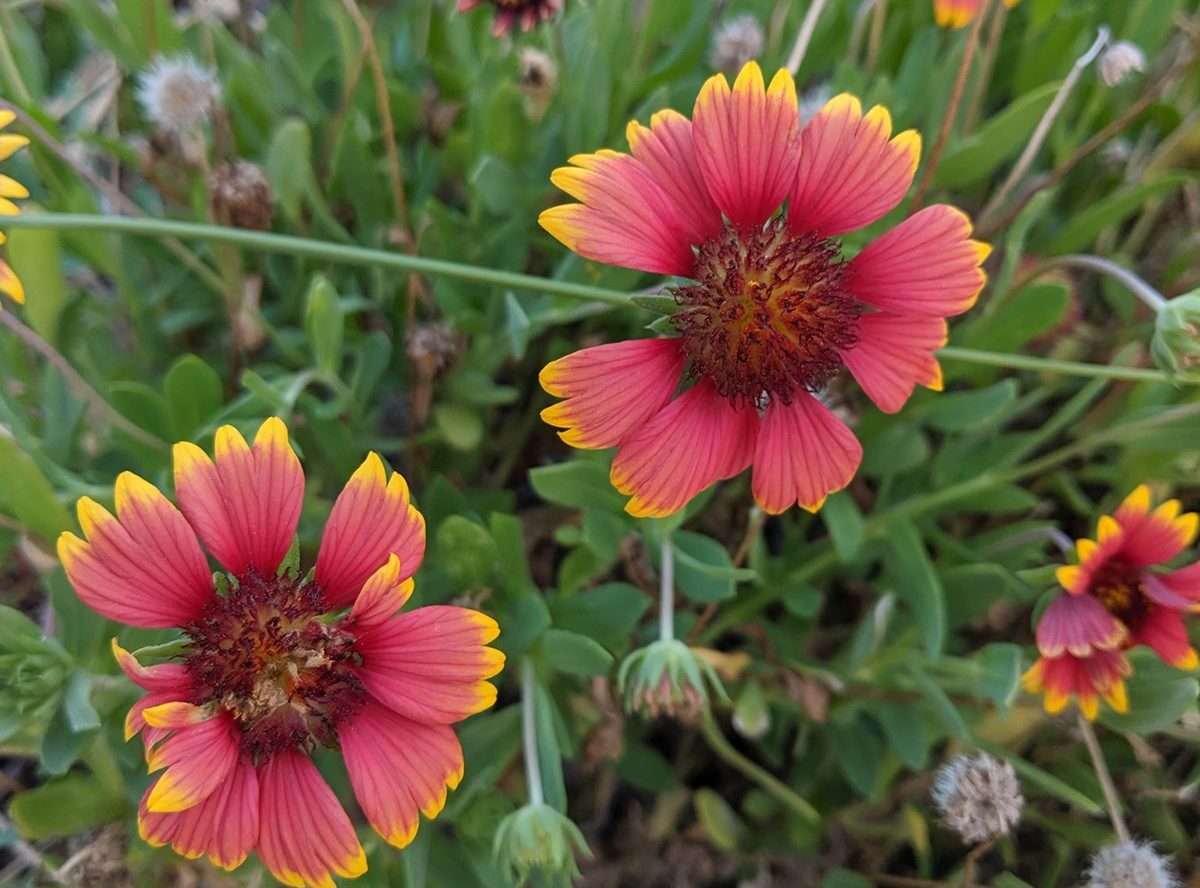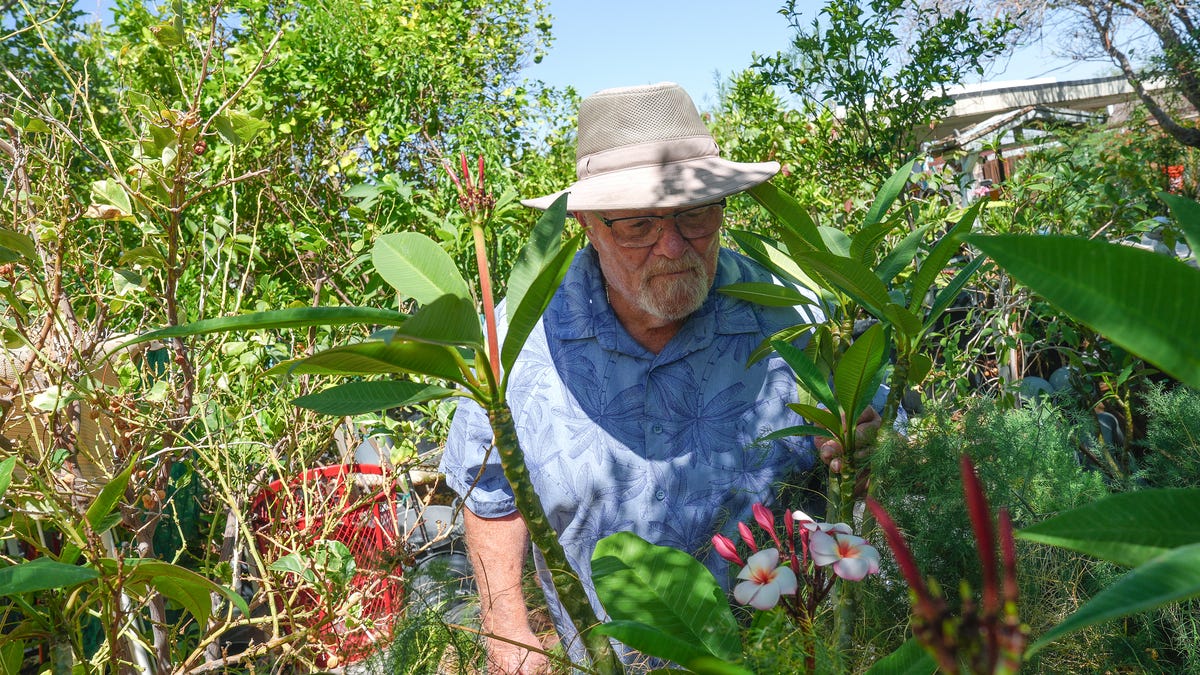What to do with potted mums that have decorated a front porch when their intense flowers begin to fade?
Even when blooms have senesced and their bright colors are gone, the flowers are turning brown and have begun to droop, the mum plant is still living. Rather than tossing the pots of mum with their spent flowers into the trash, transfer the rooted clumps to the garden.
Mums are often treated as annuals but they are cold-hardy perennials that can last in the garden for many years. Mums require little care, have few pests and faithfully repeat bloom year after year. Following are steps to overwintering potted mums in the garden.
Site location and placement.
-
Select a spot in the garden with full sun that has little competition from other plants, trees or shrubs.
-
Choose a spot with well-draining soil that has been amended with organic matter. Avoid locations with standing water as an easy way to kill a mum is to overwater it.
-
Place mum clumps several feet apart. Established plants will spread to 24 o 36 inches.
-
Do not crowd plants. Mature mums have a mounding growth habit with blooms that cover the entire foliage mound. For reference, take a look at potted mums that are being sold in box stores, grocery stores and nurseries. It is easy to determine the conditions under which the pots were grown. Mums that have spindly upright growth with blooms on the tops of stems have been grown in too-crowded conditions – they had inadequate room to properly spread to a mound. This same growth pattern will appear in the garden. If plants become crowded, they will not grow into a spreading mound.
-
Give adequate space between plants for proper air circulation to minimize pests and disease.
Preparing the potted mum for planting.

-
This step can be a little messy. Place newspaper or plastic under the mum’s pot in anticipation of loose potting media when lifting the mum clump from the container in which it has been growing.
-
Loosen the potting media around the entire base of the mum clump using a trowel.
-
Lift clump from the pot by grabbing the tops of the stems.
-
Prune the clump by cutting back the stems to a few inches in length. The prunings can be discarded, or, for industrious gardeners, the pruned tops minus the blooms can be saved. The prunings can now become cuttings that can be rooted over the winter and in the spring produce new plants that can be set out for a new generation of mums.
-
Plant the pruned clump of mums into the prepared soil at the same depth at which it was growing in the pot.
-
Keep moist.
-
Wait to fertilize until next spring.
-
Pile leaves around and fluff leaves over the newly planted clump to provide insulation over the winter.
Ellen Peffley taught horticulture at the college level for 28 years, 25 of those at Texas Tech, during which time she developed two onion varieties. She is now the sole proprietor of From the Garden, a market garden farmette. You can email her at [email protected]
This article originally appeared on Lubbock Avalanche-Journal: Gardening for You: What to do with spent mums










